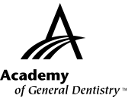|
Exercise No. 342
Subject Code: 017
Dental Materials
The 15 questions for this exercise are based on the article, Bond strength of silorane- and methacrylate-based composites to resin-modified glass ionomers, on pages 73-78. This exercise was developed by Steven E. Holbrook, DMD, MAGD, in association with the General Dentistry Self-Instruction committee.
|
Reading the article and successfully completing this exercise will enable you to:
- identify the advantages and disadvantages of silorane-based composite resins, methacrylate-based composite resins, and resin-modified glass ionomers; and
- understand the rationale for the sandwich technique.
|

